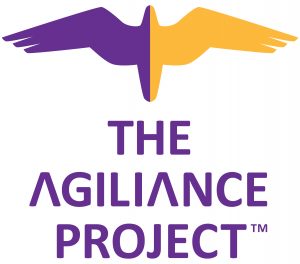Introducing the Agiliance Project™

The “pandemic year” has been very challenging for educational institutions. It’s cost them money and precious learning time, damaged relationships with students and staff, and made many former best-practices obsolete.
With those challenges comes a massive opportunity, for institutions ready, willing, and able to seize it. Worldwide, far more educational institutions will experience major changes in stature over the next five years than over the last fifty.
Not all the changes will be positive: the pandemic has already created some “big losers” in the form of closed private institutions, and many more institutions will close or suffer major reversals in the next few years, as they struggle or fail to learn to thrive in the new normal.
The “big winners” aren’t clear yet. What we know for sure is that they will be the institutions that move soonest and most successfully to “win the new normal.”
We also know that the window of opportunity to win the new normal has opened. The pandemic is not over, and the “new normal” won’t arrive everywhere at the same time, but it’s already becoming clear what it will look like:
- Mode-independent instruction: courses are designed to be face to face and online, synchronous and A handful of elite institutions will revert to fully face-to-face instruction, but most will try to consolidate their new, remote-learning capabilities.
- Rapid response: institutions are able to switch quickly and smoothly between the modes in their mode-independent courses. Experts agree that the pandemic likely will be followed by a long period of localized epidemics. Institutions will need this flexibility to be able to respond to the events specific to their locales.
- Mode-independent student-support: the student experience moves from “learning at” an institution to “learning with” an institution, with all of the changes in support-services that implies.
- Mode-independent leadership and management: similarly, a staff-person’s experience must move from “working at” an institution to “working with” an institution, with all the administrative, managerial, and planning and leadership changes that implies.
- Mode-aware campus planning; campus plans built around reliable revenues from residential students are re-engineered to thrive in the new volatility; and
- An equitable, learner-centric approach to student success. Each student’s holistic experience with the institution is built around what they bring to their learning, the mode(s) in which they learn, and where they want to go. New modes of instruction require new modes of student support. Eighteen months of disparate outcomes have made it clear that remote learning is disproportionately detrimental to non-traditional and at-risk students. Winning campuses may or may not implement “personalized learning,” but they all will implement diligent, personalized support for student success.
The window of opportunity will not stay open long, because those who move early and well will reap most of the gains. To win, institutions will need to reinforce three values in their core organizational culture:
- Agility. The new normal will be “less normal” than the old. Volatility will increase. Winning institutions must be able to move and change course quickly. The implications for administrative structure, planning, and decision making are profound.
- Performance. Whether it’s called “results orientation,” “outcomes orientation,” “student centrism,” or something else, winning institutions will build new formal and informal contracts with their students (and staff!) that pay much more attention than before to what the students, their parents, and their society are seeking to achieve. Those that keep the better promises they make will win the new normal.
- Resilience. Many features of the new normal remain unresolved. Institutions trying to win will encounter setbacks, will make wrong choices, and will experience all the other downsides of innovating during a time of high volatility. Resilient institutions will recover and win anyway; less-resilient institutions will be overcome.
These are not new values–many experts have long identified them as essential for successful educational innovation, even before the pandemic arrived. The pandemic and its expected aftermath, however, have moved them from “important for innovation” to “important for survival.”
Eighteen months ago, we began an internal project to develop our next-generation of education-design and institutional capability-building offerings. We named that effort The Agiliance Project™, because our analysis of client needs showed that agility, performance, and resilience needed to be at the heart of sustainably excellent education in every nation, going forward.
When the pandemic struck, we tabled our next-generation efforts in favor of helping institutions cope with the pandemic day-to-day. We knew that we couldn’t develop effective solutions until the shape of the new normal became clearer.
Now that the new normal has clarified enough, we’re ready to help the institutions that want to win to accomplish their visions. Over the next several months, we’ll be releasing a series of Agiliance capability building tools and methodologies designed to help any institution to win the new normal.
Stay tuned for some exciting announcements—and if you’re ready to move now and you’d like a sneak-preview, let us know via our contact form.
